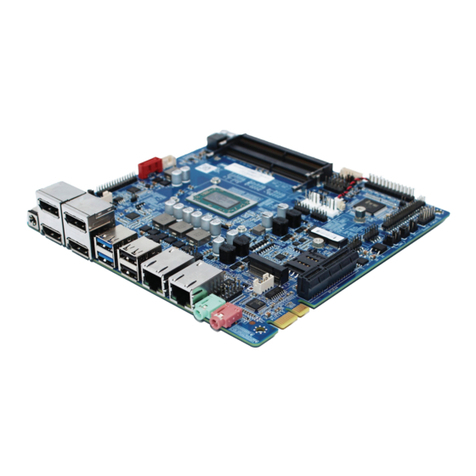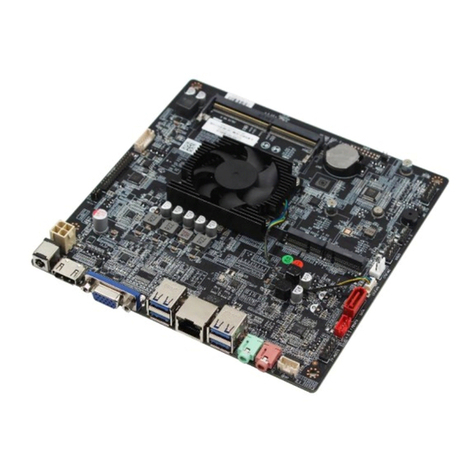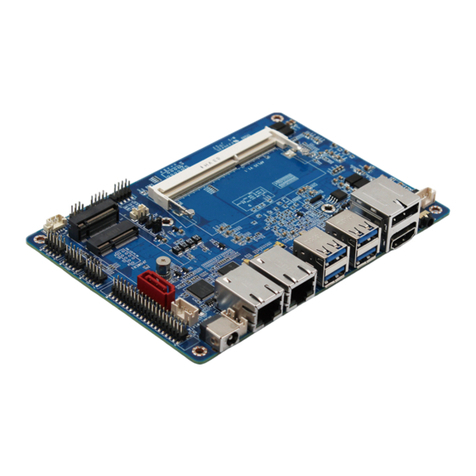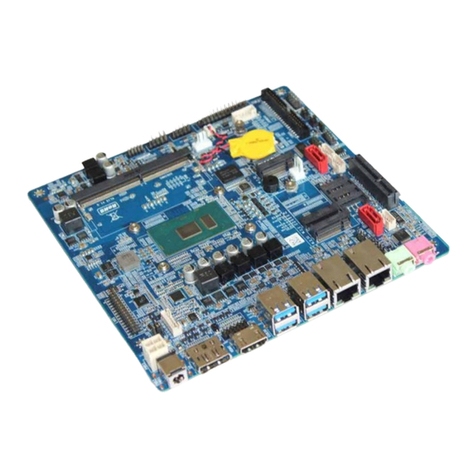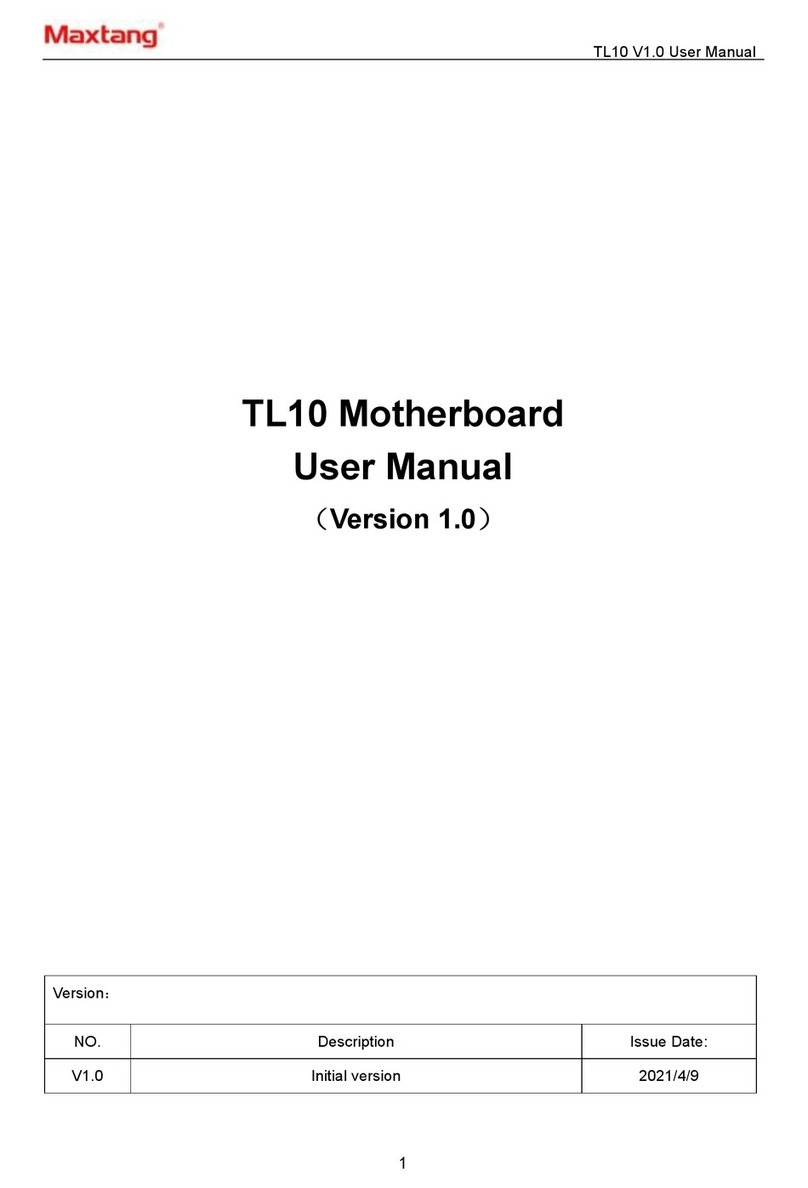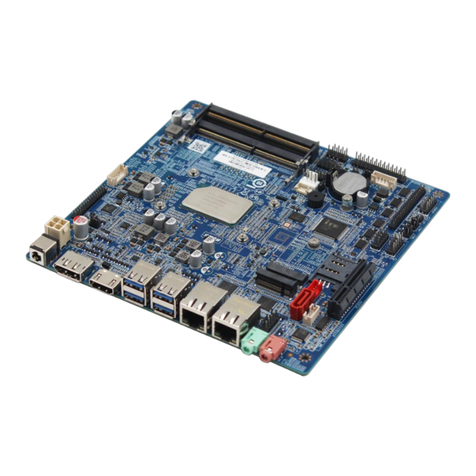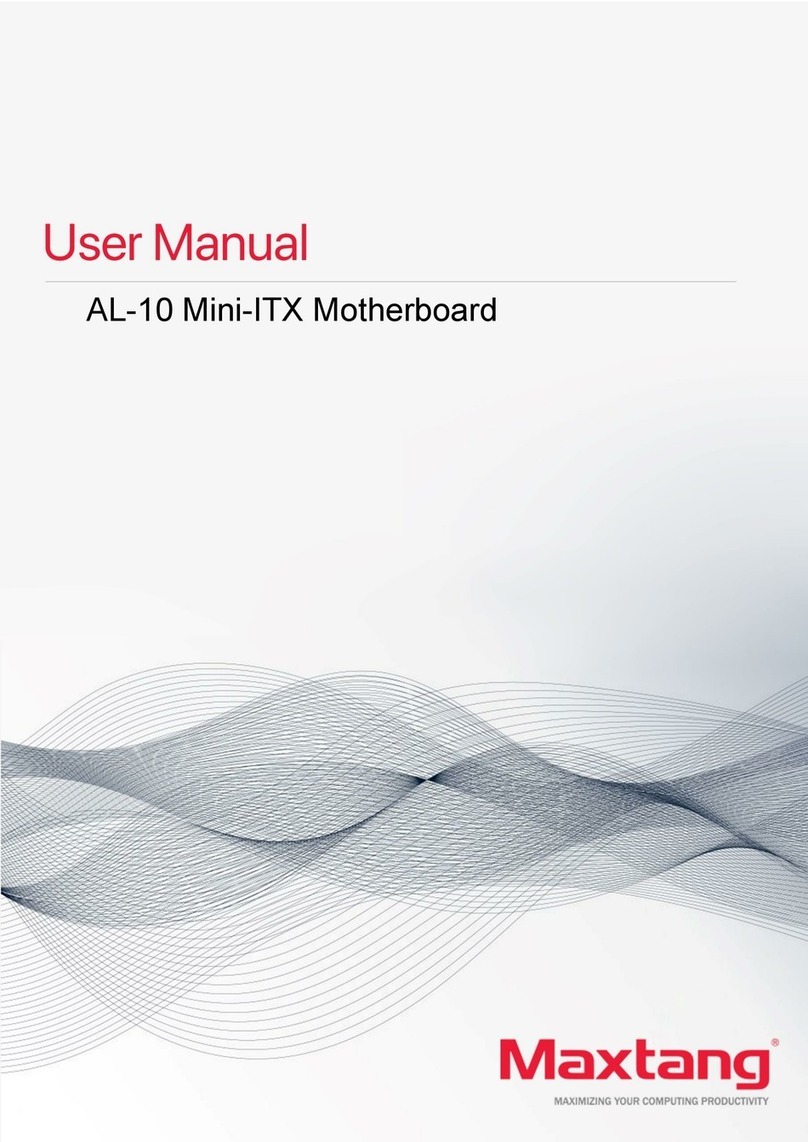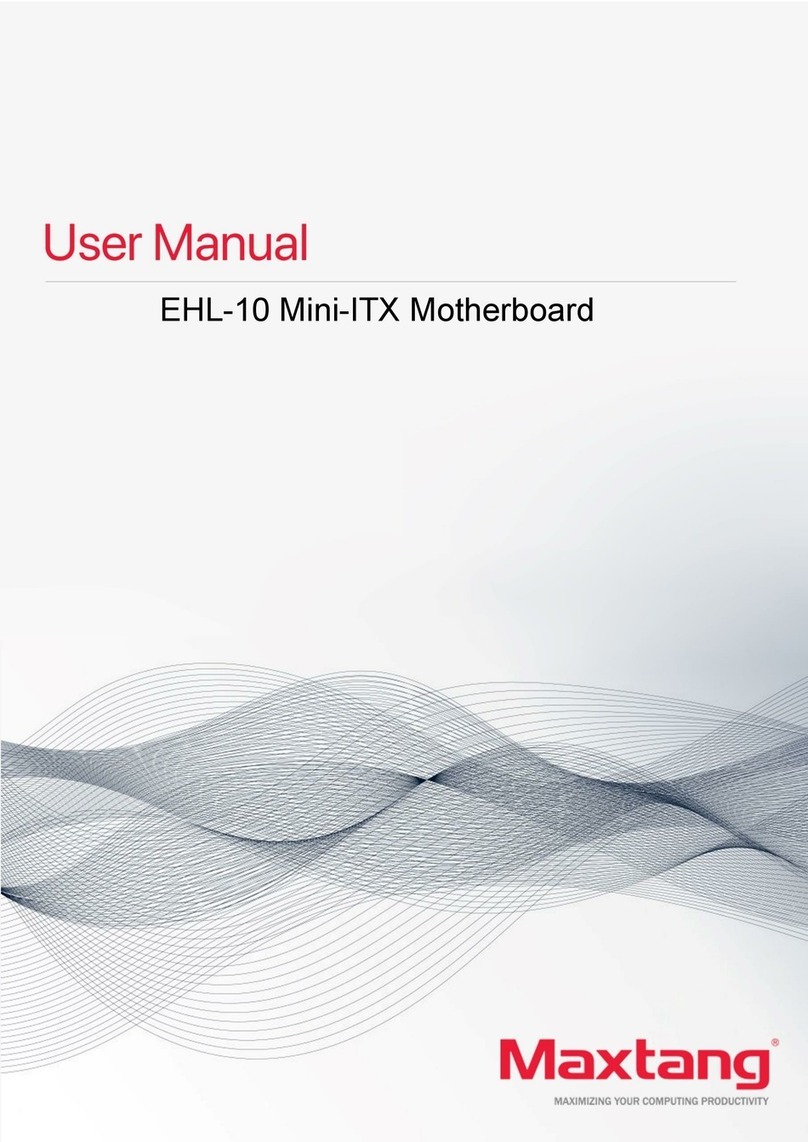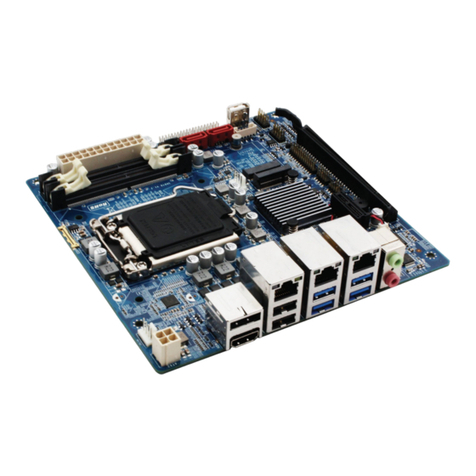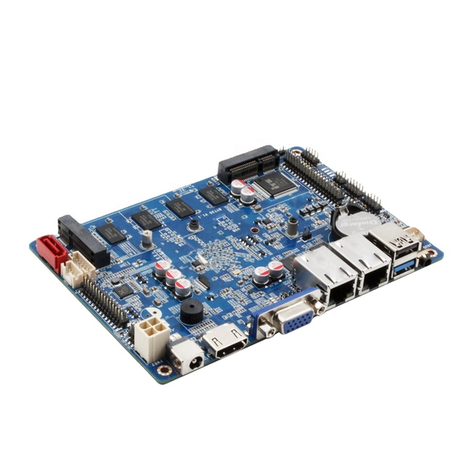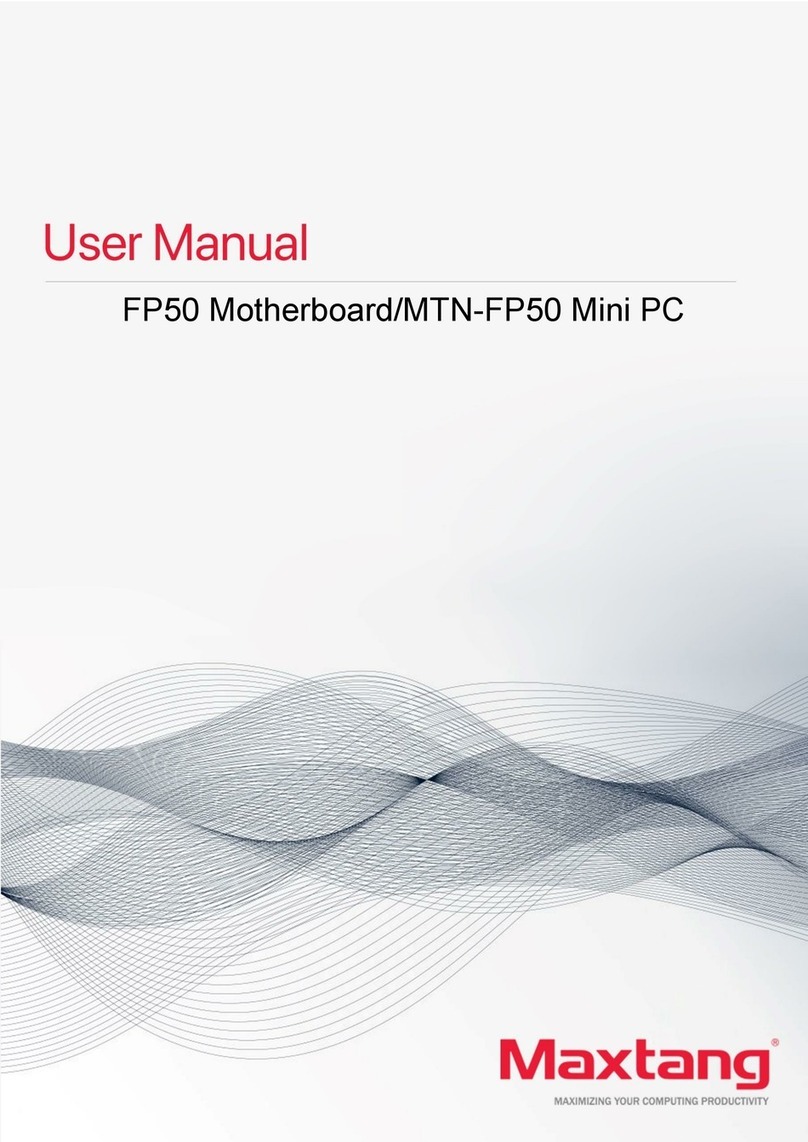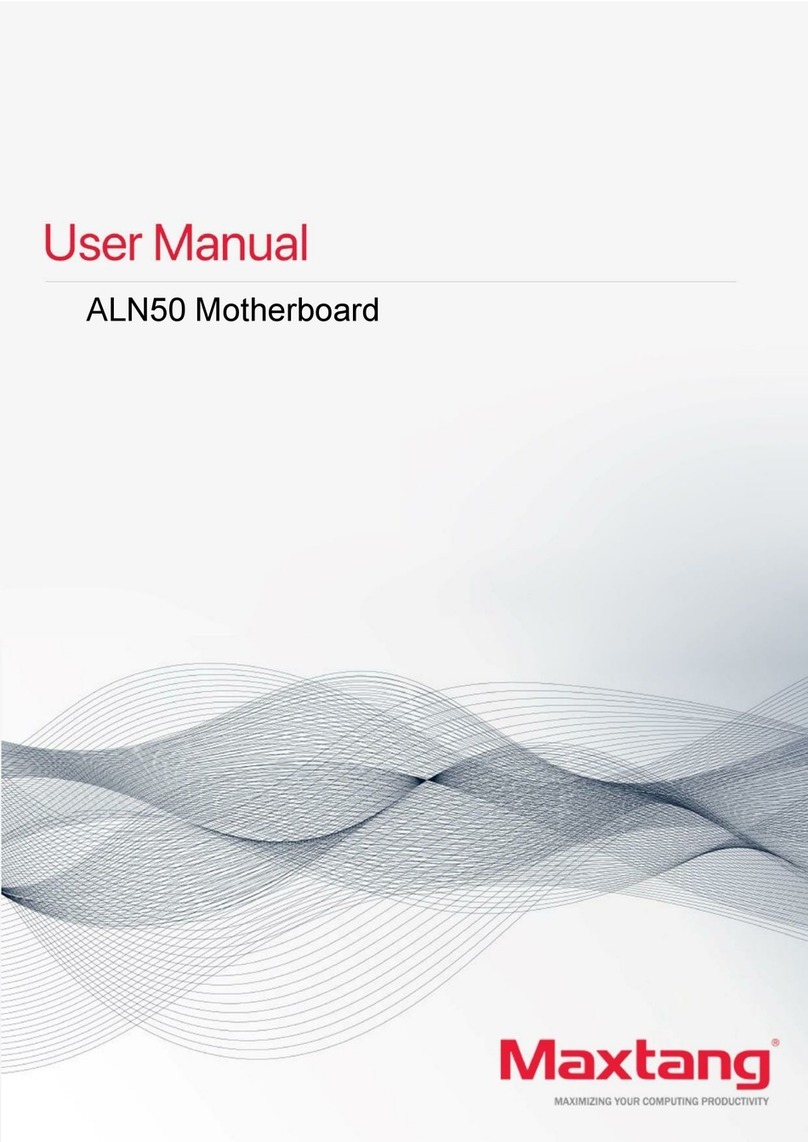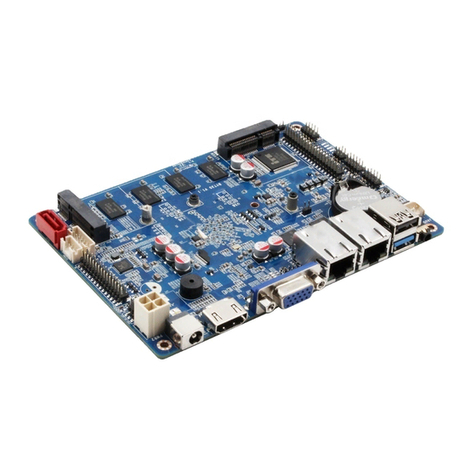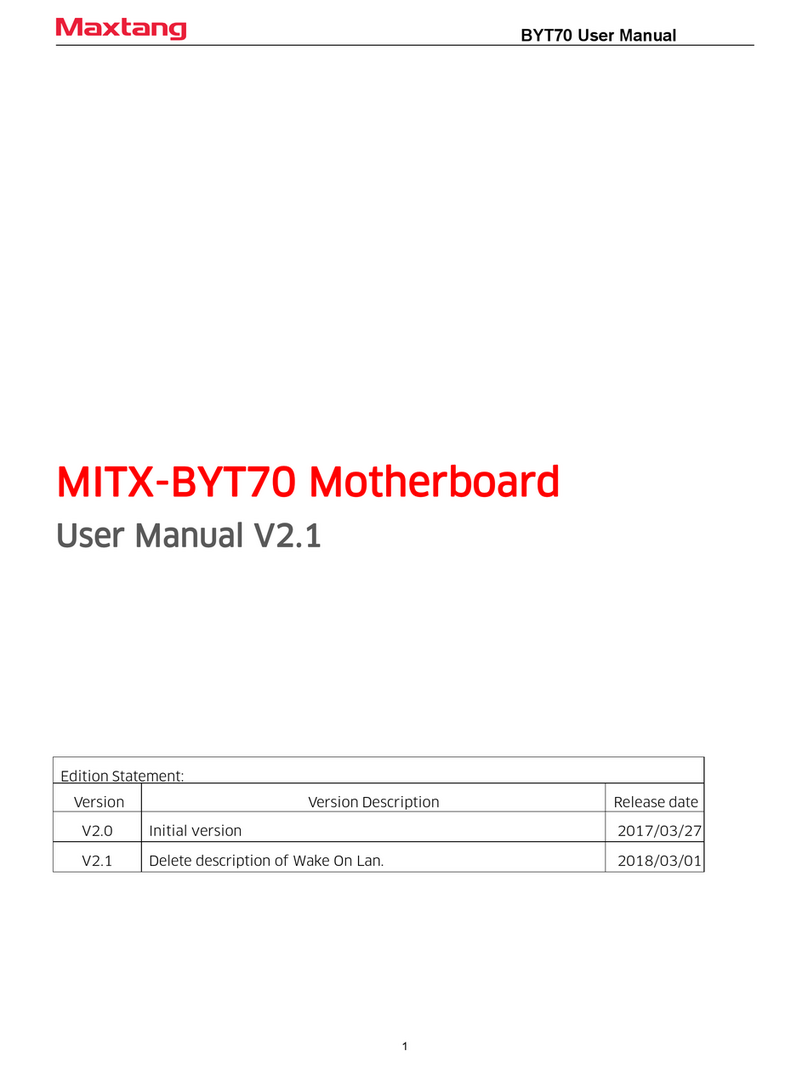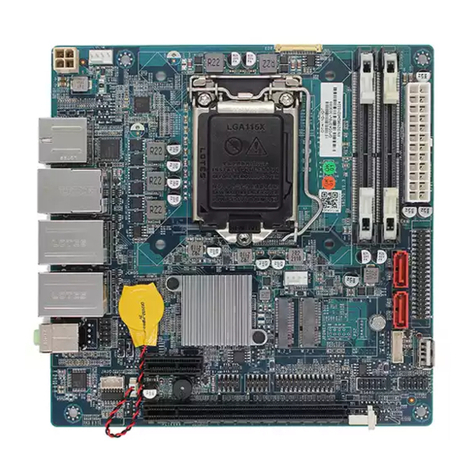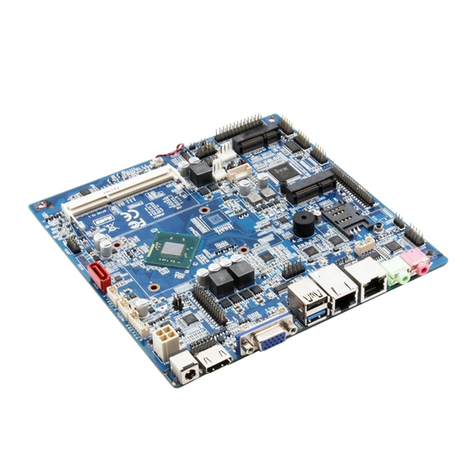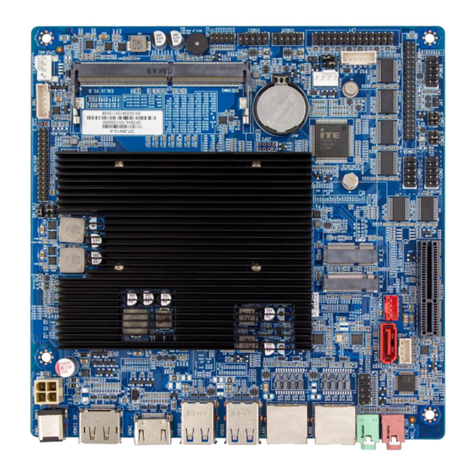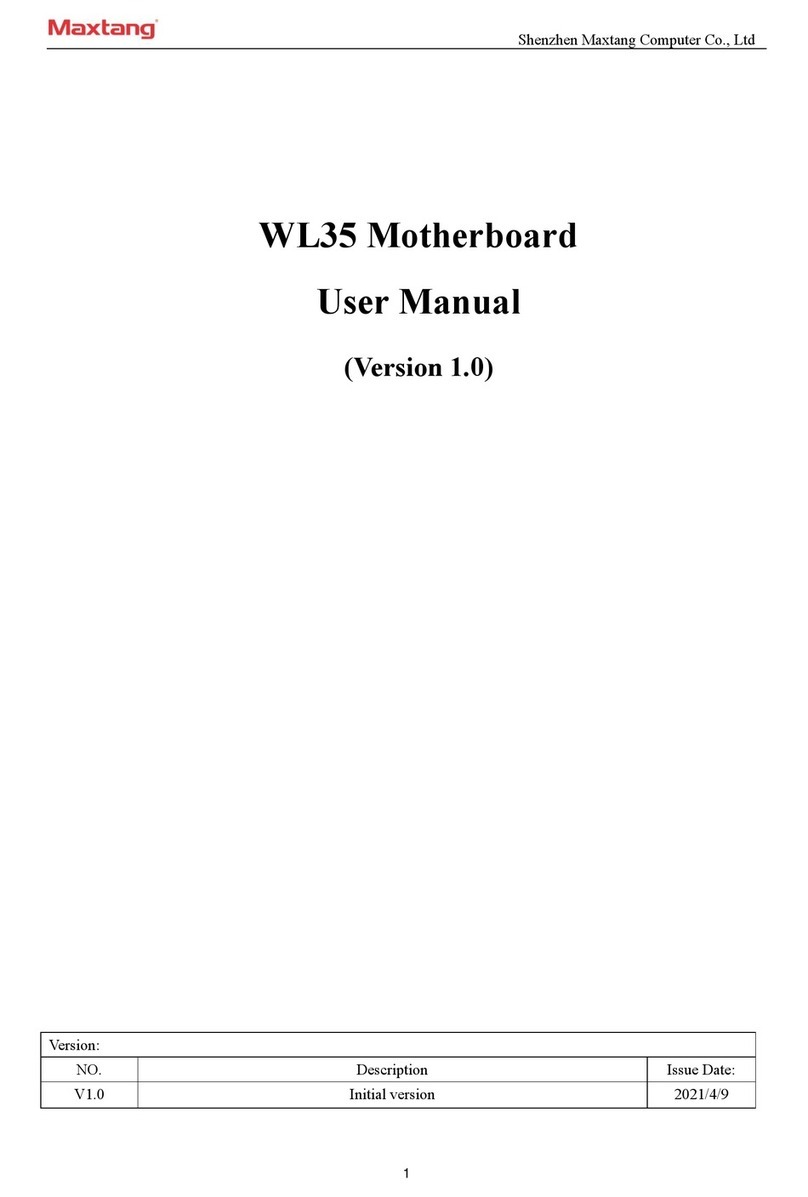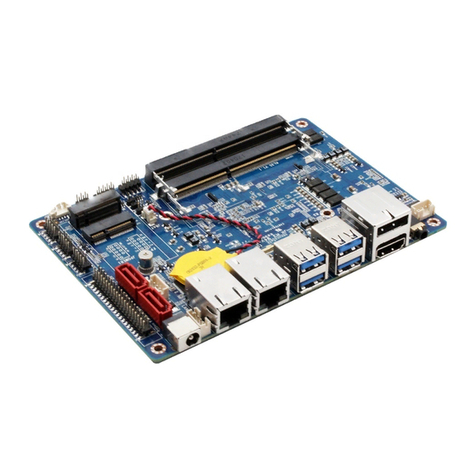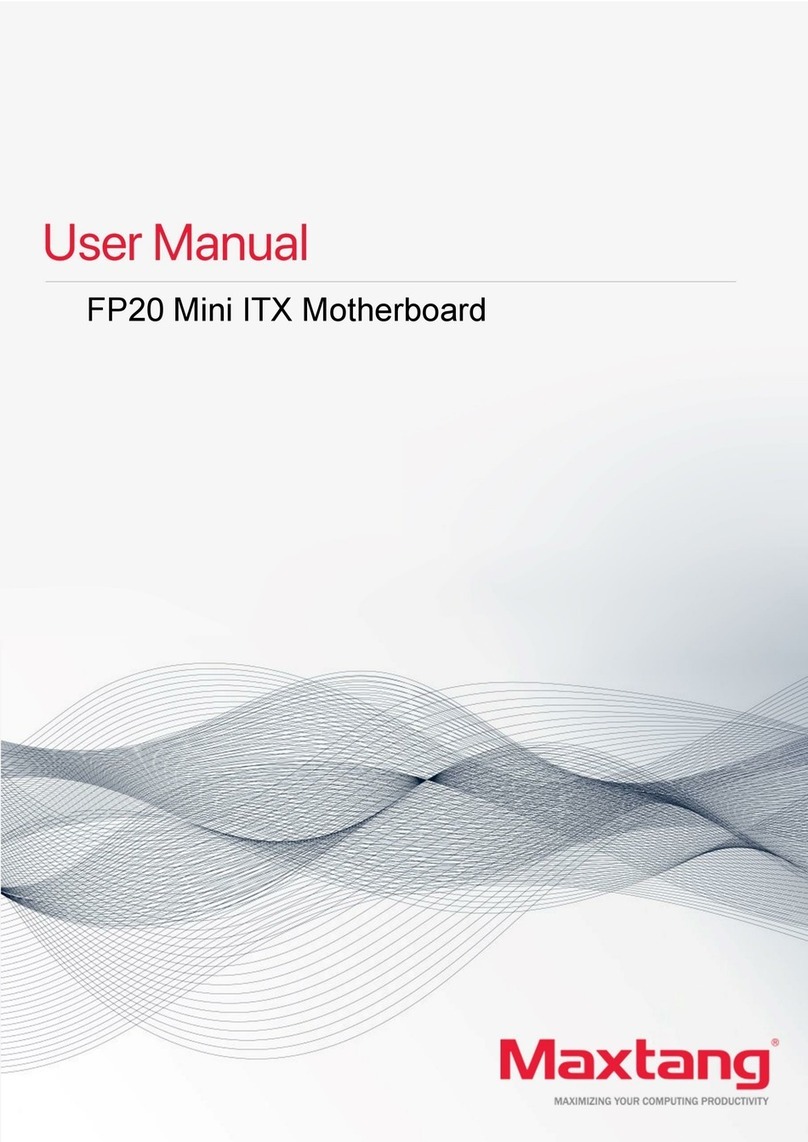Shenzhen Maxtang Computer Co., Ltd
2
Contents
BYT-60 Mini ITX Motherboard........................................................................................................ 1
Chapter 1 Product Introduction...................................................................................................... 3
1.1 Parameters................................................................................................................................ 3
Chapter 2 Hardware........................................................................................................................ 4
2.1 Connector Diagram................................................................................................................... 4
2.2 Jumper Setting.......................................................................................................................... 5
2.3 Memory Slots............................................................................................................................ 5
2.4 Internal Display Interface (JHDMI, JVGA) ................................................................................. 5
2.5 LVDS .......................................................................................................................................... 5
2.6 eDP (optional)........................................................................................................................... 7
2.7 Internal PWR2........................................................................................................................... 8
2.8 Internal USB interface (USB1, USB2) ........................................................................................ 8
2.9 LAN............................................................................................................................................ 8
2.10 Audio (FP_AUDIO, JAUD, JSPIF) .............................................................................................. 9
2.11 COM (JCOM1, JCOM2, JCOM36, JCOM2/4_P) ..................................................................... 10
2.12 LPT (JLPT, J4) ......................................................................................................................... 12
2.13 GPIO(JGPIO)....................................................................................................................... 13
2.14 SATA and mSATA (SATA1, SATA2, mSATA, PWSATA1, PWSATA2) ........................................... 13
2.15 Mini-PCIe (Mini-PCIe, SIM1) ................................................................................................. 14
2.16 PS/2 (PS2).............................................................................................................................. 14
2.17 CPU FAN (CPU_FAN1) ........................................................................................................... 14
2.18 System FAN (SYS_FAN).......................................................................................................... 14
2.19 Front Panel Control Interface (JPOWER1) ............................................................................ 15
2.20 Auto Power On (JAT) ............................................................................................................. 15
2.21 CMOS Clearance/Retention (screen printing: JCMOS)......................................................... 15
